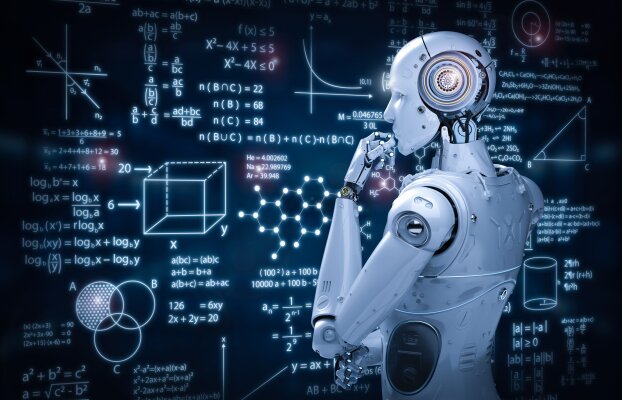Artificial and hybrid artificial intelligence on the rise

Artificial intelligence (AI) is becoming increasingly important in science, industry and business. From highly functional smartphones and innovative smarthome solutions to self-driving cars and autonomously flying drones, almost anything is possible today. Although AI technologies have long been suitable for everyday use, there is still “room for improvement” in this regard at the commercial level.
Artificial Intelligence and DeepMind
Again and again, researchers ask themselves what the future of artificial intelligence will look like. Deep learning approaches play a central role here. For example, AI scientists at DeepMind have succeeded in teaching or training a neural network to understand the effects of simple objects on each other. In this way, it becomes clear that one would be able to replace symbolic AI systems with so-called Deep Learning.
What is behind DeepMind?
The original naming convention for DeepMind was Google DeepMind. This is a company that specializes in artificial intelligence programming. The company DeepMind was founded in the fall of 2010 by Demis Hassabis, Mustafa Suleyman and Shane Legg and was acquired about four years later by the US corporation Google Inc. taken over.
Deep Learning can be approached from different angles:
- Scientist Geoffrey Hinton believes that there are essential approaches hidden in the basic principles of Deep Learning that can reveal the ultimate solution to almost any task.
- The research team, working with scientist Gary Markus,is focusing on innovative hybrid systems that can combine Deep Learning and manually conceptualized symbolic systems.
Notice:
The basis of both methods is the symbolic approach, which is based on the human way of thinking. In the long run, the goal is to achieve that artificial intelligence can lead to logical conclusions. In addition, it is believed that AI can make some understanding of causality possible. A very significant aspect that is already being called an elementary milestone in the direction of human-like AI.
Recently, DeepMind published a scientific research paper that proves that a neural network performs demonstrably better in the so-called CLEVRER benchmarkthan classical neurosymbolic models do. However, a prerequisite for this is continuous training in line with requirements.
What is CLEVRER all about? Note from the MedSolut team
CLEVRER stands for “Collision Events for Video Representation and Reasoning.”It is human nature to be able to reason about causal and temporal events from images and videos, among other things. For example, the focus of most popular video argumentation benchmarks is on pattern recognition based on complex linguistic and visual input. However, the causal conceptualization is usually left out.CLEVRER gets to the bottom of the complementary aspect and takes a look at both the causal and temporal structures behind object videos. Accordingly, CLEVRER is a diagnostic video data approach for the systematic analysis of specific computational models and can be applied to a wide variety of reasoning tasks. The basis of the whole is four main questions:
- thedescriptive questioning: “What kind, color, size, etc.?”
- the explanatory question: “Why and for what of relevance, important for what reason, etc.?”
- thepredictive questioning: “What is the possible development, what happens next?”
- The understanding question, “What principled approaches, what underlying dynamics and relationships?”
With the help of the CLEVRER method, the DeepMinds work could literally be taken to a new level. At the same time, however, it became apparent that it is still not entirely clear where exactly the limits of neural networks are. Nevertheless, DeepMinds researchers agree that their approaches and methods outperform even the best neurosymbolic models. And this even without the use of data that has been elaborately processed in advance, but with up to 40 percent less training effort.
Video: Thinking Robots | What You Should Know About Deep Mind & AI
CLEVRER, CATER and Co.
Benchmarks such as CLEVRER are no longer sufficient today, according to many AI researchers. Therefore, the CATER benchmark is also used in many fields. It is a related method that aims to predict the position of a selected object in the last sequence of a video. Using the CATER benchmark, DeepMind researchers were also able to demonstrate that neural networks can “learn” to reason effectively about the fundamental dynamic conceptualization of physical occurrences or events.
True to the motto: “New knowledge needs new methods,” the scientists say it is now necessary to consider establishing new benchmarks in this category. Only then will it be possible to holistically investigate and determine the full potential of neural networks in the future.
Not only is the successive study of AI as such fundamental, but it is equally important to construct the trust of society and entrepreneurship in AI applications. Thus, the focus continues to be on creating and advancing AI solutions for society or for industry and business or for healthcare, commerce, public administration, logistics and transportation, and many other areas.
Hybrid intelligence as a sensible solution
In today’s world, it is not enough to deal with machines, systems and plants that only act on the basis of pre-trained models. Rather, it must be ensured that human experience and observation values are also included in order to build on this basis, to learn and to pick up and understand relevant contexts. Therefore, hybrid artificial intelligence is of elementary importance in more and more areas.
In the meantime, it is possible to copy or imitate the human ability and to ensure the “fruitful” interaction between man and machine with the help of corresponding highly complex technologies. It therefore remains exciting to see how artificial or hybrid AI will continue to develop in the future.
Do you have questions about the article or topic requests for a new article? Then don’t be afraid to contact us.




